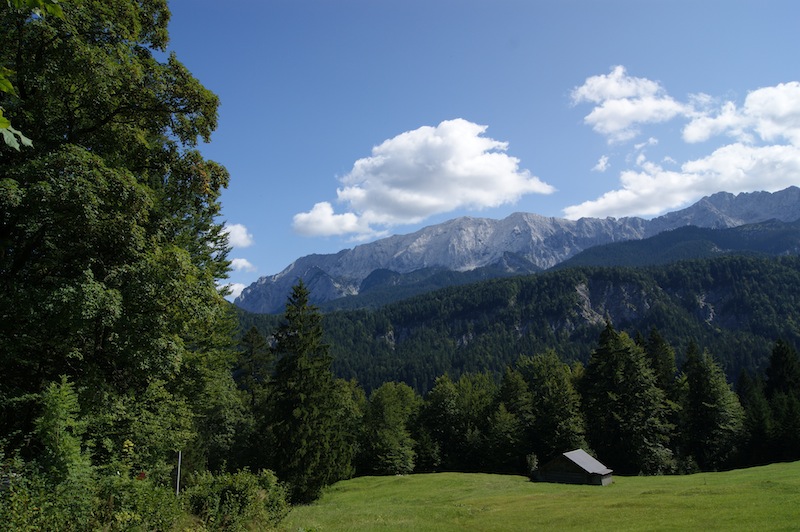If I was given the chance to live abroad, the Alps is where I’d buy my dream home. They’re perfect for sunny walks in summer, skiing in winter and natural wonders all year round. Natural wonders like the Partnach Gorge at Garmisch-Partenkirchen in Germany.
We spent a week in the Bavarian town late one summer (by coincidence discovering our neighbours were staying in town too when we bumped into them on the train to Gatwick Airport). And a great week it was, other than Graham ripping his ear open falling down the hotel stairs and spending several hours in hospital having it stitched back together again. We couldn’t fault the German health service and their wonderful staff. It’s just that Graham looked a bit of a knob walking around town with his head wrapped in bandages.
By then we’d already explored the gorge, known locally as the Partnachklamm, and for me it was one of the highlights of our trip, as wonderful as visiting the peak of the Zugspitze and King Ludwig’s Linderhof. It was certainly far more rewarding than flicking through German magazines in a hospital waiting room.
The gorge was formed over millennia as the Partnach stream sliced slowly through the mountains. The entrance to it is reached via a walk through the fields and woods of the valley, where the Partnach has all the features of a gentle flowing river. From the pre-war Olympic Stadium in Garmisch, it took us about 20 minutes to reach it. We paid our small admission fee at the entrance and began the climb up the path that’s been cut into the sheer rock.
As far back as the 18th century, locals braved the torrents and sheer cliff faces for anything other than leisure – to bring wood from the Reintal Valley at the top of the gorge down to their homes in Partenkirchen. Back then there was no path and life and limb was risked regularly, lives lost.
Timbers would be lowered into the water at the top of the valley, leaving nature and gravity to take their course until a tree trunk or two got stuck between the rocks. Then it would be up to the men to risk their lives to free them, dangling dangerously over the cliffs in little chairs held by rope. Not surprisingly, quite a few ended up dashed on the rocks below.
When we were there the stream was pretty fierce but it was nothing like it would be in spring, when the immense forces of the snow melt create spectacular flows and noisy drama. Any time of the year, I wouldn’t want to fall into it. Come winter, much of it freezes.
The rock-faces, at times just a few inches apart, reach up to 260ft or more in places and the sun occasionally breaks through the canopy of trees above.
Once or twice the path is cut deep in the rock, notably at a lower point where, in 1991, a huge section collapsed, blocked the old footpath and dammed the stream. It didn’t take long for the Partnach to find its way through again or for the damage to be repaired.
Up at the top, 2,300ft later, we emerged into the sunshine again, a bit knackered. In front of us the Partnach was again nothing more than a lazy stream just a few inches deep in places.
We briefly walked along the riverbank, caught our breath and then continued on uphill through the trees to find a mountain restaurant where we could refill on cold beers and lunch. Plenty of other hikers were out and about – along with about a million wasps…
The views across the Bavarian Alps were some of the best I’ve seen anywhere and made the climb worth it alone. We descended by a much gentler path in the sunshine, stopping occasionally to take in the landscapes and snap away on our cameras.
And again I could see why this could easily be home…





